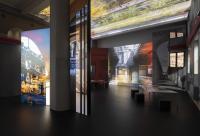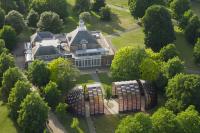Green Port
Barcelona, Spain
Green Port project is part of a research program carried out in the architecture and urbanism studios in Escola d'Arquitectura de Reus. This research focuses on the performance of several future development proposals for Camp de Tarragona and its surrounding area. One of the proposals is focused on the transformation of the Tarragona Industrial Port into a Green Port, as well as the regeneration of the Pineda and Cap Salou areas. The basic strategy of all proposals consists on developing the "cradle to cradle" concept for a mediterranean society. "Cradle to cradle" means that we are native of our place: our waste is also our resource, the sun and other renewable energies are our supply, and we design for the pleasure of all generations, not by intending to reduce all consumption, but by balancing consumption with resource-waste generation and reuse. This research aims, with the irrenunciable complicity and collaboration with the local planning institutions, to purpose a far-reaching transformation that sets the basement of a new eco-economic growth that places us, as a Country, in the frame of the third industrial revolution. Green Port purposes the construction of a new green port that establishes a separation between the maritime area of Pineda and the current Industrial Harbor of Tarragona. The project would aim to integrate, protect and regenerate environmentally those two areas. The construction of the new port would open new urbanistic possibilities, and their gains could be used for the regeneration of the existing industry towards a clean industry. The project envisions a mechanism of CO2 capture, through, among others, the construction of greenhouses in the area limitating the industry, that would use this gas as a nutrient for the food they would produce. The greenhouses would be home to new self sufficient housing programs (not only from an energetic point of view, but also from the environmental and existential confort perspective). Regarding the landscape, the construction of both the new Green Port and the greenhouses in the industrial limit, would diluate the current conflict between the economic industrial versus turistic motors. The regeneration of the Cap Salou and Pineda areas would include the turistic urban operation that has recently been planned. Economically, the construction of housing would become a high return of the investment in the regeneration of the existing indsutry into a sustainable and environmentaly friendly industrial production. The new housing programs would, furthermore, make use of the existing industrial sources (heat, waste) that are currently only unprofitted waste. Additionally, the new constructions could incorporate energy captation mechanisms in order to make use of the high solar potential as a surplus energy supply to feed the existing plus the new demands. The ultimate aim of this research is restructuring and reactivating the territory.
- 位置
- Barcelona, Spain









